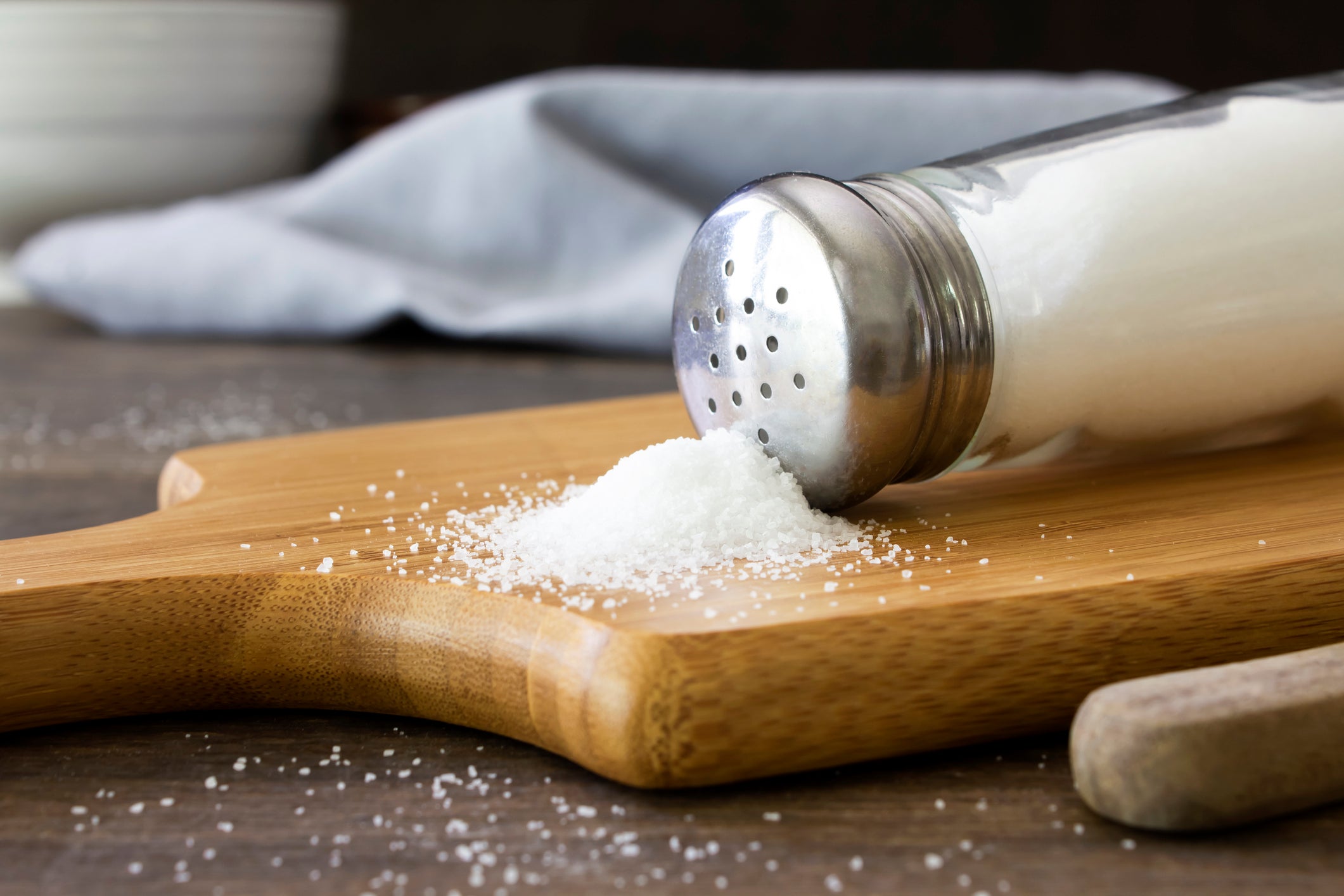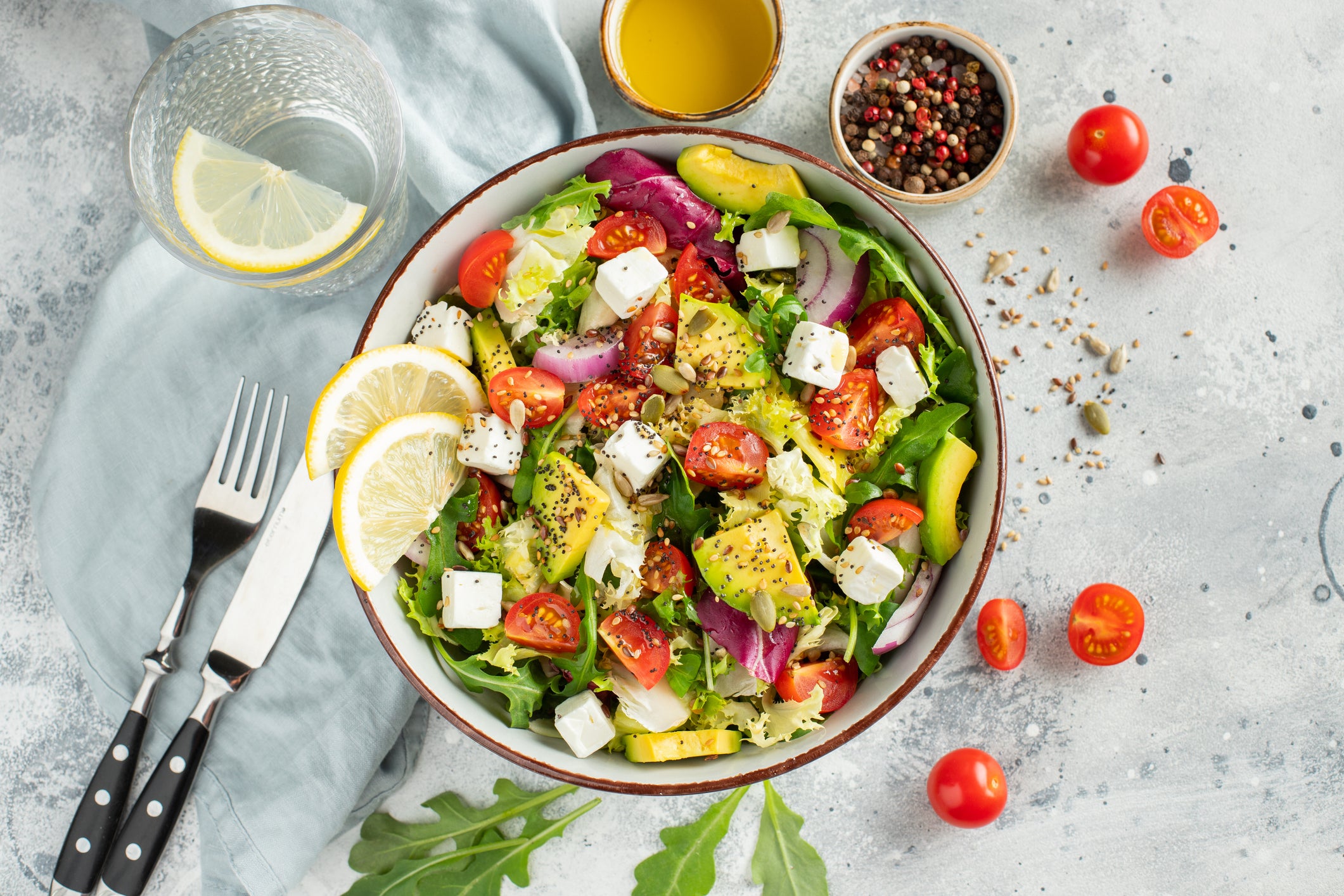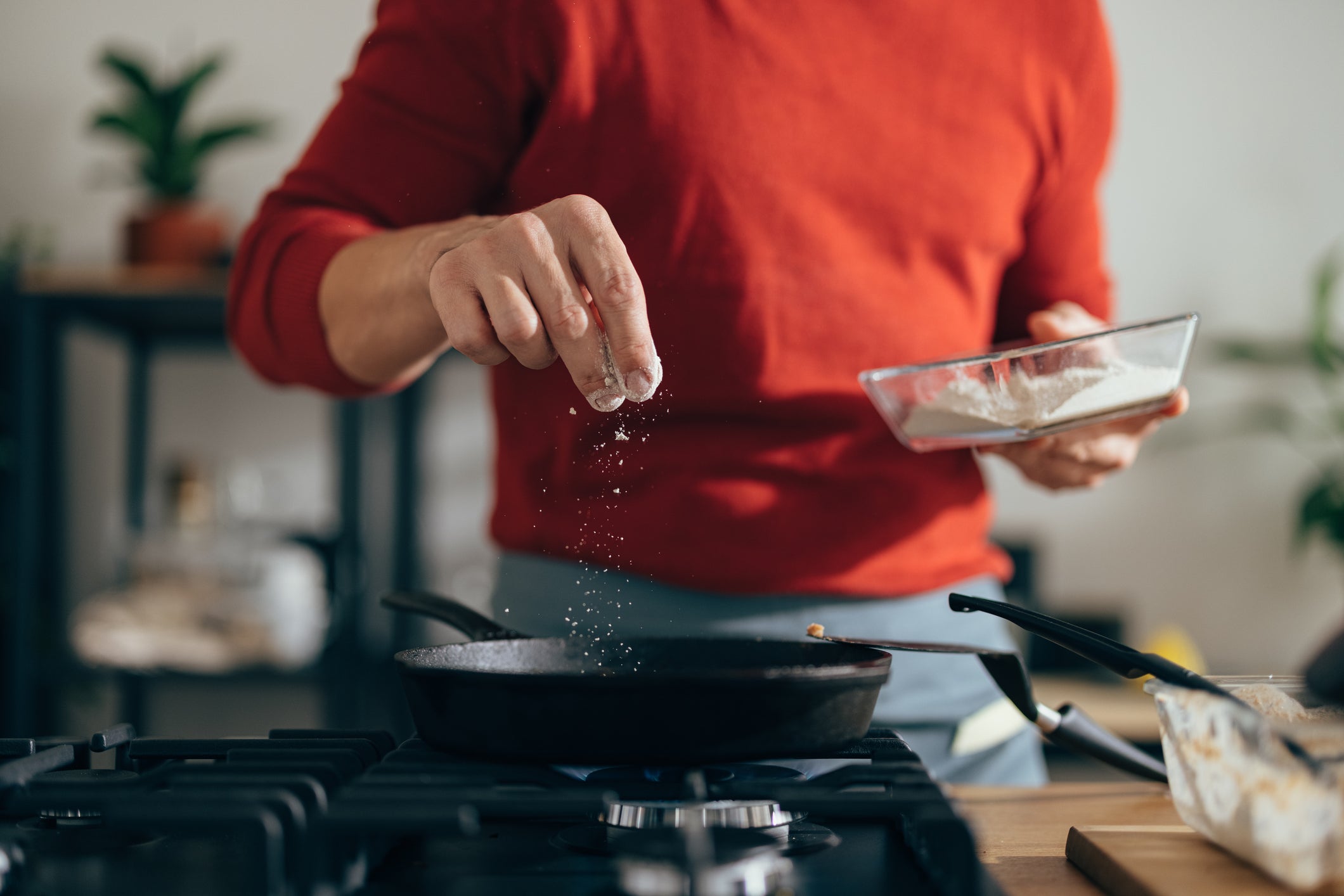Think you eat healthily? Here’s why you might be blowing your salt limit by lunchtime
Soups, salads and cereals might look virtuous – but they’re often loaded with salt. Hannah Twiggs investigates how the food industry is undermining your health, one bite at a time


You’re tired, it’s late and you’ve had a long day. On your way home, you swing by the supermarket and grab something that looks fairly harmless: a Jamie Oliver ready meal lasagne. After all, if anyone knows how to make food healthier, it’s him. You pop it in the microwave, eat it in front of the telly and think no more of it.
But here’s the catch: You’ve just eaten over half of your daily recommended salt intake. Not an indulgent takeaway or a Friday-night pizza – a midweek meal with a health halo, quietly sabotaging your body from the inside.
A spokesperson for the Jamie Oliver Group said: “Everything is sourced to Jamie’s high food standards, there are no hidden artificial nasties or sugars and we are always transparent with clear front-of-pack labelling about which of our range is more indulgent.”
A new report from Action on Salt has revealed that more than half of all ready meals sold in the UK are dangerously high in salt, and one in five are high in salt, fat and saturated fat simultaneously. Some meals contain more than an adult’s full daily allowance of salt in a single serving.
The news that quick and convenient ready meals might not be the healthiest in the supermarket is not exactly groundbreaking, but it’s just the tip of the iceberg. Much of what we eat day-to-day is quietly undermining our health, and salt – the most ordinary of ingredients – is playing a central, if largely invisible, role.
“High salt consumption remains one of the UK’s most pressing – and preventable – public health issues,” says Sonia Pombo, head of impact and research at Action on Salt, “particularly for more vulnerable groups in society, who are more likely to suffer from high blood pressure, heart disease and stroke.”
You might not think of yourself as someone who eats a lot of salt. You might not even own a salt grinder. But if you regularly eat ready meals, processed snacks or even seemingly innocuous lunchtime staples like sandwiches, cereals or soups, the odds are you’re consuming far more than is recommended.
According to the latest data, the average adult in the UK consumes 8.4g of salt a day – that’s 40 per cent higher than the government’s recommended maximum of 6g. The World Health Organisation’s (WHO) limit is even stricter: just 5g a day, or roughly a teaspoon.
The damage this does isn’t theoretical. High salt intake is a leading cause of high blood pressure, which in turn is the biggest risk factor for strokes and heart attacks. And no one seems to be paying attention. The earliest correlation drawn between high blood pressure and salt consumption was in 1904, and yet a report from the British Heart Foundation (BHF) just this week says the number of deaths in adults aged 20-64 from cardiovascular disease has risen by 18 per cent since 2019.
“Eating too much salt is one of the major causes of high blood pressure,” says Tracy Parker, senior dietician at BHF, “which in turn is associated with around half of heart attacks and strokes in the UK.”

It’s also been linked to kidney disease, stomach cancer, osteoporosis and cognitive decline. Reducing daily salt intake by just 1g could prevent more than 4,000 heart attacks and strokes every year in the UK. And if all British adults followed the WHO’s salt intake guidelines, we could see up to 1.4 million fewer new cases of high blood pressure by 2035, along with 135,000 fewer cases of coronary heart disease and 49,000 fewer strokes. The numbers are staggering – and all the more so because salt, unlike many health hazards, is so easily overlooked. Here in the UK, one person dies every four minutes from heart-related illness.
What’s particularly insidious about salt is how invisible it is. It’s not necessarily the food that tastes salty that’s causing the problem. The majority of the salt we consume doesn’t come from the shaker on the table – it’s already added into the products we buy. Bread, breakfast cereals, soups, sauces, tinned beans, crisps, sandwiches, biscuits, meat substitutes, microwave meals. Even sweet snacks and health foods can be surprisingly salty.
“The idea that consumers can ‘choose healthy’ is a myth,” says Pombo. “Most people assume that supermarket meals marked as ‘balanced’ or ‘better for you’ are low in salt, but our findings show otherwise. The system is stacked against consumers – it should never be this hard to eat well.”
Small changes in salt intake can have a huge impact. Even cutting 1g a day could prevent thousands of premature deaths every year
I think I eat fairly sensibly, even in my line of work. On busy days, I often grab Itsu’s Korean spicy stir-fry udon noodle pot – it feels like a lighter, healthier option. But one pot contains 4.42g of salt – nearly three-quarters of your daily maximum under UK guidelines, and almost nine-tenths under the stricter WHO limit. OK, so surely a salad is better? It is – but not by as much as you might think. Another favourite, Marks & Spencer’s avocado, feta and grain salad, contains 1.54g of salt in a single 320g pot. That’s over a quarter of your daily allowance in the UK, and nearly a third by WHO standards. What about a simple tin of Heinz cream of tomato soup – a lunchbox classic if ever there was one? One 400g can contains 2g of salt, which clocks in at almost half your daily maximum under WHO guidelines. And if I’d started the day with a quick bowl of Kellogg’s Corn Flakes – just a standard 30g serving contains 0.34g of salt (and who actually weighs their cereal?) – I’m already nudging over 6g for the day. And that’s without a single salty snack.
No one expects crisps to be low in salt – they’re crisps. But when you compare them to something like that Itsu pot or the M&S salad, the numbers start to blur. According to a March 2025 report by Action on Salt, one in three crisp products surveyed were high in salt, with some reaching up to 5.3g per 100g – almost a full day’s recommended intake in a single bag. Flavoured nuts, often touted as a high-protein, energy-boosting snack for the health-conscious, pack up to 3.2g per 100g, which adds up fast if you’re grazing through the day. Even popcorn, widely seen as the lighter, healthier choice, can contain as much as 4.5g of salt per 100g in its salted varieties. It all adds up – without you even tasting it.
This is what makes the salt issue so difficult to tackle. It’s not about shaking less onto your chips, it’s about the fact that salt is everywhere, and reformulating food products is both technically tricky and commercially unpopular.
The UK once led the world in salt reduction policy. The Food Standards Agency introduced the first voluntary salt targets in 2006 and, for a time, average salt consumption did decline. But responsibility for salt policy later shifted between departments, industry influence grew and the momentum faded. The result? Salt intakes have been creeping back up since 2014.

“It’s now crystal clear that voluntary efforts aren’t working,” says Pombo. This is especially troubling for those already at greater risk: older adults, men, people living with obesity and those with diabetes or high blood pressure. “We need legally enforced salt limits, alongside clear front-of-pack labelling and bold fiscal policies like a salt levy to force meaningful change.”
Parker agrees: “Ultimately, food companies must do more to reduce salt in their products so that healthier options are more easily available.”
There is, however, one promising solution that has caught the attention of public health experts: salt substitutes. The WHO’s new 2025 guidelines endorse the use of lower-sodium salt substitutes (LSSS) – typically made by replacing some sodium chloride with potassium chloride – as a viable way to reduce blood pressure and cardiovascular risk at a population level. A major review of 26 clinical trials showed that swapping regular salt for LSSS reduced systolic blood pressure by nearly 5 mmHg (millimetres of mercury) and diastolic pressure by 2.4 mmHg. It also cuts the risk of non-fatal heart attacks and strokes. The only caveat is that these products are not recommended for people with kidney disease or conditions that affect potassium regulation.
6g of salt
UK recommended daily intake
In the UK, salt substitutes remain niche. They’re often hard to find, expensive and not widely used in commercial food manufacturing. Yet they could offer a powerful middle ground for people who want to protect their health without giving up flavour. Salt, after all, isn’t just a nutritional issue – it’s a cultural and culinary one. It makes food taste good. The goal isn’t to banish it entirely, but to use it more intelligently.
“Small changes in salt intake can have a huge impact,” Pombo explains. “Even cutting 1g a day could prevent thousands of premature deaths every year.”
That means cooking more often, even just once or twice a week. It means getting used to the idea that a soup or a salad might be saltier than a plate of chips. It means paying attention to food labels, especially anything with more than 1.5g of salt per 100g, which is classed as high. It might mean trying out a salt substitute and seeing if you notice the difference.
“For those relying on convenience foods, look for ‘low salt’ labels, avoid products with red traffic lights for salt, and don’t add extra salt at the table,” says Pombo. “But ultimately, the burden shouldn’t fall on the public – it’s time the government took responsibility and made mandatory salt reduction a priority.”
While we wait for that to happen, “there are simple changes you can make to cut down on the amount of salt you eat and keep your heart healthy,” says Parker. “Start by using less salt in cooking and flavouring meals with spices, garlic, pepper or lemon juice. But since around 85 per cent of the salt we eat is already in the foods we buy, the biggest impact comes from checking food labels.”
The bigger picture is this: salt remains one of the cheapest, simplest and most effective levers for improving public health. Cutting down doesn’t require a radical lifestyle shift or expensive supplements – it just requires a bit of awareness and political will. Yet for now, the burden is being passed onto consumers, who are navigating the supermarket aisles blindfolded.
“Public support is firmly behind this,” Pombo adds. “A recent poll we commissioned showed that 80 per cent of consumers support stronger government action to make food healthier, while 76 per cent believe food companies should be doing more to reduce salt. The appetite for change is clear; what’s lacking is political will.”
Salt might not seem like the enemy, but in excess, it absolutely is. The sooner we treat it that way – not by demonising food, but by demanding better from the people who make it – the sooner we’ll start turning the tide. Until then, check the label, cook when you can and don’t be fooled by what looks like a healthier option. Because in this war on salt, the most dangerous weapon is the one you can’t taste.


Join our commenting forum
Join thought-provoking conversations, follow other Independent readers and see their replies
Comments